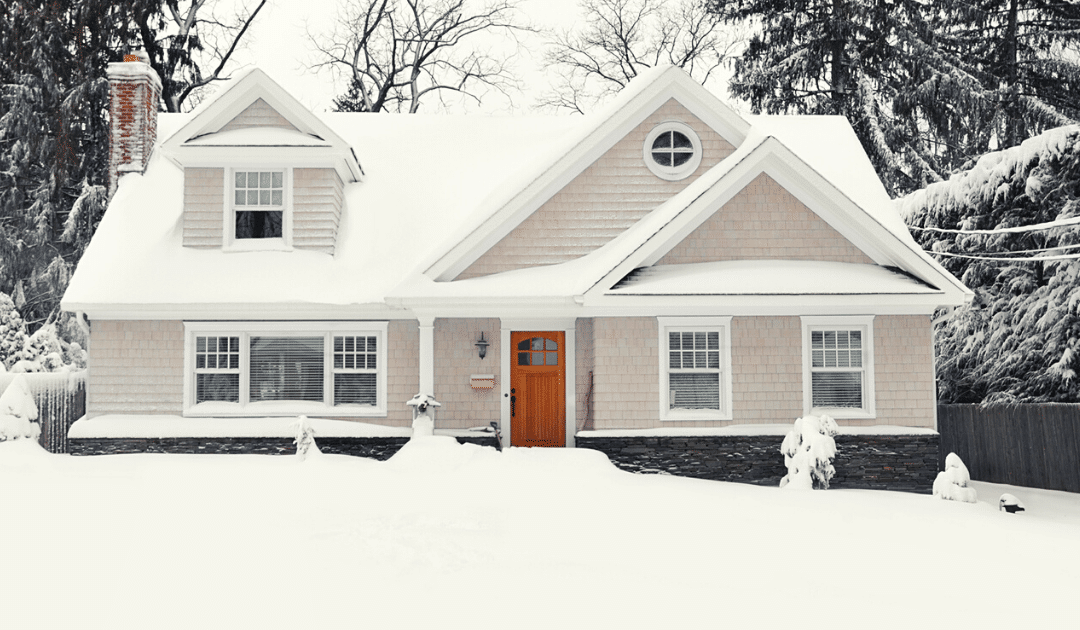Extreme weather events are becoming more severe and frequent. If you live in a region that gets snow and ice, these events can easily cause damage to your home, racking up losses and repair costs.
Here are some of the common ones to prepare for, coverage considerations, and how to prevent damage in the first place.
Frozen Pipes
One of the most common sources of wintertime home damage is water damage from frozen pipes. Losses are usually covered under your homeowner’s policy; however, keep in mind that some claims are denied if negligence is found (e.g. proper home temperature wasn’t maintained).
Protect against water damage:
-
- Add extra insulation in attics, basements, and crawl spaces where pipes may be exposed to the cold.
- During especially chilly spells, turn faucets on just enough for a very slow drip.
- Shut off water to outside hoses and store them inside to protect them from extreme temps.
- Read our post for more tips on preventing frozen pipes.
Ice Dams
Ice dams form when snow melts on your roof and refreezes before siphoning off. Once formed, they continue to grow with further melt/refreeze cycles. Over time, ice dams can damage your roof, sometimes springing leaks that let water into your home. While your homeowner’s policy should help cover damage to your roof and home (check your policy for coverage limits and details), it probably won’t cover damage to any personal belongings.
Protect against ice dams:
-
- Remove snow from your roof regularly.
- Ventilate your attic so that hot air doesn’t get trapped, warm a spot on your roof, and melt snow that can easily become an ice dam.
- Turn down the heat in your home so as to prevent the roof warming that produces ice dams.
- Check out our post on winter roof care for more ice dam-prevention tips.
Hail Damage
Roofs and windows are especially susceptible to hail damage. Make sure you understand your coverage and any hail exclusion that may apply. After a storm, inspect your roof for damage right away – remember, if damage goes unnoticed it can cause roof leaks months later that may not be covered.
Protect against hail damage:
-
- Have your roof inspected every year in the fall and repair or replace missing or loose shingles or tiles.
- If your area is especially prone to hail storms, look into installing hail-resistant asphalt shingles.
Wind Damage
Severe storms oftentimes bring severe winds. Although sometimes damage can happen with wind directly hitting your home, usually the real danger lies in what the wind can blow into or onto your home.
Protect against wind damage:
-
- Keep up with trimming trees and branches that are leaning, weak, dead, or otherwise compromised or a threat to your home. Check out the top 7 signs of tree health issues here.
- Inspect your home’s exterior for loose siding, gutters, and shutters.
- Read all our tips on prepping for severe storms.
Injuries From Ice
Black ice is a slipping, injury, and accident risk wherever it forms – on roadways, driveways, walking paths, porches, decks, and steps. If a visitor slips and sustains an injury on your property and decides to sue, are you protected? Liability coverage is usually included as part of homeowners insurance and would kick in, in this case, to help with the person’s medical bills as well as your legal costs. That said, check with your agent to review your coverage limits and conditions.
Protect against black ice:
-
- Be vigilant about snow shoveling so that snow doesn’t melt and refreeze on high-(foot)traffic areas.
- Clear your gutters so that water goes down the spout like it’s supposed to, instead of onto walking paths.
- See our article for more black ice safety tips.
Roof Collapse
Roofs can collapse if the weight of ice or snow on them is too much to bear. Insurance may help cover the cost of repairing or replacing a damaged or destroyed roof. And if your house is uninhabitable as a result, it may cover additional living expenses and/or hotel. Check to make sure you understand what your policy covers, as well as all limits and terms.
Protect against collapse:
-
- Have regular annual roof inspections so you are aware of and can fix any issues that can cause structural vulnerabilities, weak spots, or problem areas.
- If snow is piled too high for you to remove, or if your home is taller than a single story, look into hiring a professional snow removal service.
- If you already have ice dams, get them removed professionally asap – ice dams can cause serious and costly damage.
Wintertime damage to your home can happen before you’ve even had time to think about it – and by then, it’s usually too late and you’re looking at losses, repairs, and the claims process. Protect your home before the storms roll in by making sure you’re covered and – even more important – have the kind of coverage you need.
This article is furnished by California Casualty. We specialize in providing auto and home insurance to educators, law enforcement officers, firefighters, and nurses. Get a quote at 1.866.704.8614 or www.calcas.com.
- Graduation – When to Remove Your Child from Your Auto Policy - May 18, 2023
- How to Prevent Catalytic Converter Theft - May 17, 2023
- How Much Does Home Insurance Cost? - May 17, 2023

